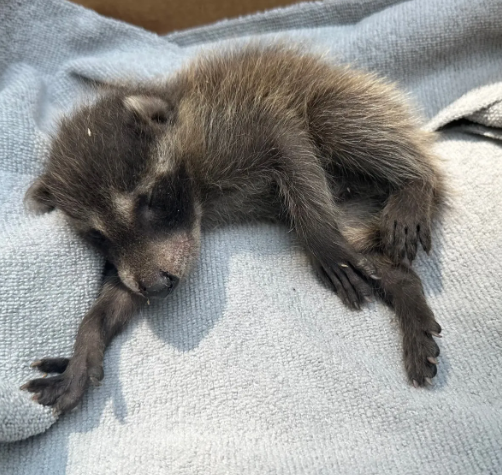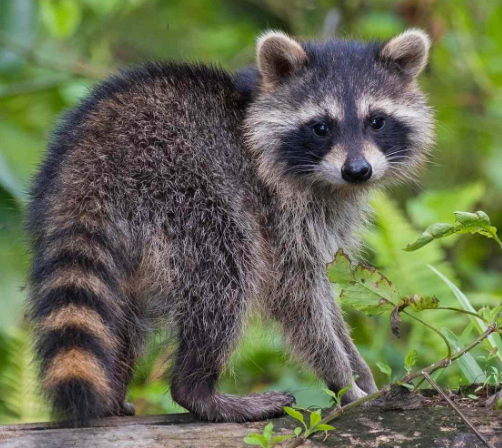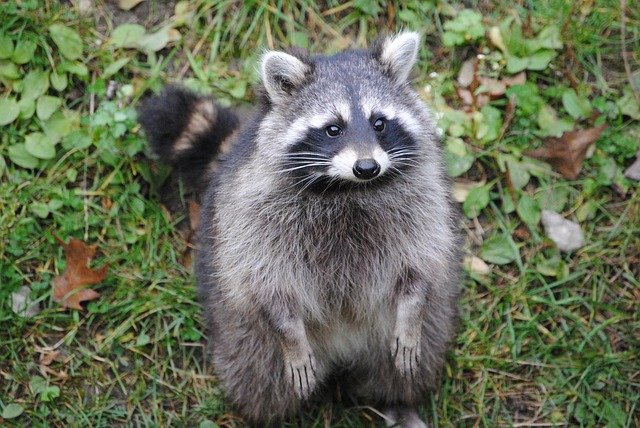
By Rick Miller
rick@wildpestpros.com
Boasting over two decades in wildlife removal, Rick is the seasoned pro behind wildpestpros.com. A witty storyteller with deep country roots, he’s your go-to guy for any critter conundrum. Off-duty, you’ll catch him spinning tales of his wild adventures. Facing a wildlife woe? Reach out to Rick!
How to Tell the Age of a Raccoon?
Introduction: How to Tell the Age of a Raccoon
Ah, raccoons – nature’s little bandits, always ready to swipe a snack or investigate our trash bins. With their clever little paws and that iconic mask, it’s no wonder folks are curious about them. But have you ever looked at a raccoon and wondered just how old the critter might be? Knowing a raccoon’s age isn’t just about satisfying our curiosity; it’s crucial for folks involved in rehabilitation, removal, or those simply aiming to understand and coexist with these intriguing creatures.
Raccoons, like us humans, go through various life stages, each with its own set of physical and behavioral characteristics. From the adorable kits with their barely-there masks to the full-grown, wily adults – understanding the age of a raccoon can offer insights into their behavior, needs, and the right approach to take, especially if they’re frequenting your property.
In this article, we’re going to take a jaunt through the life of a raccoon, discussing ways you can estimate their age by observing their appearance and behavior. So, whether you’re a curious homeowner or an aspiring wildlife enthusiast, strap in for a raccoon-filled ride! If you have a raccoon on your hands please reach out to us to help on our contact form!
Physical Characteristics:
a. Baby Raccoons (Kit):

If you’ve ever had the chance to lay eyes on a baby raccoon, you’d know they’re as cute as a button. But how do you spot one?
- Size and Weight: Fresh out the gate, these little fellas are only about the size of a candy bar, weighing in at a mere 2 to 3 ounces.
- Fur Color and Patterns: Newborn kits don’t have the prominent mask raccoons are known for. Their fur is a light gray and feels super soft to the touch, though I’d advise against trying to feel it yourself!
- Eyes and Movement: Newborns come into the world blind and helpless. Their eyes remain closed for the first three weeks, and they’re mostly immobile, relying on their mama for warmth and food.
b. Juvenile Raccoons:

Growing faster than weeds in a garden, by this stage, these critters are getting more adventurous.
- Size and Weight: By the time they reach the juvenile stage (around 2 to 9 months old), they’re about the size of a small housecat. You’re looking at a weight range of 5 to 12 pounds.
- Development of Mask and Tail Rings: The distinct mask starts appearing, and their tails begin to show those signature rings.
- Teeth and Eating Habits: They’ll have most of their baby teeth by now and will begin transitioning from their mother’s milk to more solid foods. Expect them to munch on anything from fruits and nuts to small critters and, yes, your leftover pizza if they can find it.
c. Adult Raccoons:

The kings and queens of the raccoon world. By this time, they’ve seen a thing or two and have the scars to prove it.
- Full-grown Size: Typically weighing between 12 to 35 pounds, though some particularly well-fed raccoons in urban areas can exceed this.
- Wear and Tear on Teeth: Their teeth might show signs of wear, especially if they’ve been around the block a few times.
- Full Coat Patterns: Their fur is denser, and the gray color deepens. That mask they wear? It’s now in its full, glorious form, making them the true bandits of the animal kingdom.
Behavioral Indicators:
a. Baby Raccoons:
Just like human babies, raccoon kits have their own set of behaviors that indicate their tender age.
- Dependency on Mother: In the early weeks, kits are heavily reliant on their mom. If you spot a lone baby, it’s a safe bet mama raccoon isn’t too far off, probably off on a food run.
- Initial Exploratory Behaviors: As they grow a bit older and start to move, they’ll exhibit clumsy, exploratory behaviors around the den. They’re still learning the ropes of being a raccoon, after all!
b. Juvenile Raccoons:
This stage is all about learning and play. These young raccoons are like teenagers, eager to explore yet lacking the experience of adulthood.
- Playful Antics: Juvenile raccoons are notoriously playful. Spotting a group of raccoons playing tag or wrestling? You’re likely watching juveniles.
- Initial Foraging Habits: While they are still learning the ropes, these young’uns will start to forage. They might be a bit more reckless, investigating anything and everything to determine if it’s food.
c. Adult Raccoons:
With age comes wisdom, or so they say. By the time raccoons reach adulthood, their behaviors reflect their experiences and innate survival instincts.
- Territorial Behaviors: Adult raccoons are more territorial than their younger counterparts. If you notice a raccoon marking areas with scents or becoming aggressive when other raccoons approach, you’re likely dealing with an adult.
- Mating Habits and Parenting: Come springtime, adult raccoons are on the hunt for love. Males might be seen following females, and females will be busy searching for a safe place to set up a den. Later in the season, a mother raccoon guiding her kits is a clear sign you’re observing an adult. If you have a raccoon on your hands please reach out to us to help on our contact form!
Auditory Clues:
Raccoons aren’t just visually fascinating – they have a whole range of sounds that can give you a clue about their age and intentions.
- Baby Raccoons: Their vocalizations sound like soft mews and whistles, especially when they’re hungry or cold. If you hear these high-pitched cries near your home, there might be a den close by.
- Juvenile Raccoons: As they grow, their sounds evolve into more pronounced chitters, growls, and hisses, especially during their playful antics or minor squabbles over food.
- Adult Raccoons: Their vocal range is vast. From loud purrs when they’re content, harsh growls when threatened, to eerie screams during mating season. If you’re out camping and hear something that sounds straight out of a horror movie, it’s probably two raccoons discussing the finer points of romance.
Cautionary Notes:
Now, before you go off playing detective, it’s important to note a few things:
- Safety First: No matter their age, raccoons are wild animals. While they may seem curious or even friendly, it’s crucial to maintain a safe distance. If you have a raccoon on your hands please reach out to us to help on our contact form!
- Rabies Warning: Raccoons are one of the primary carriers of rabies in the U.S. Always be cautious and avoid any raccoon acting unusually aggressive or overly docile.
- Relocation Issues: Found a raccoon or family of raccoons and thinking of relocating them? It’s best to call professionals. Moving raccoons without proper knowledge can be harmful to the animals and may not solve your problem.
Conclusion: How to Tell the Age of a Raccoon?
Raccoons are fascinating creatures, each with its own personality and quirks. Understanding their age can help us better coexist, respond appropriately to their presence, and even marvel at the different stages of their lives. But always remember, as charming as these masked bandits might be, they’re still wild at heart. Treat them with respect, caution, and a touch of awe. If you have a raccoon on your hands please reach out to us to help on our contact form!